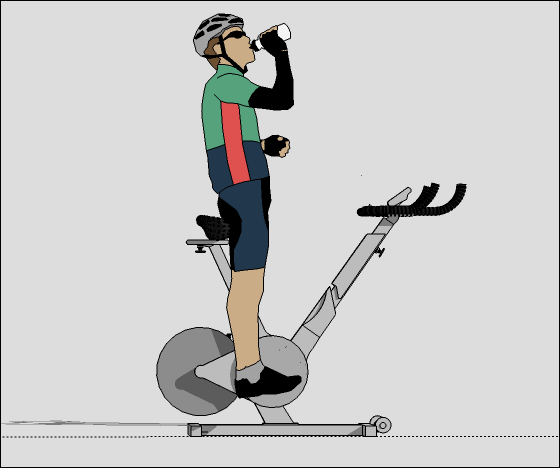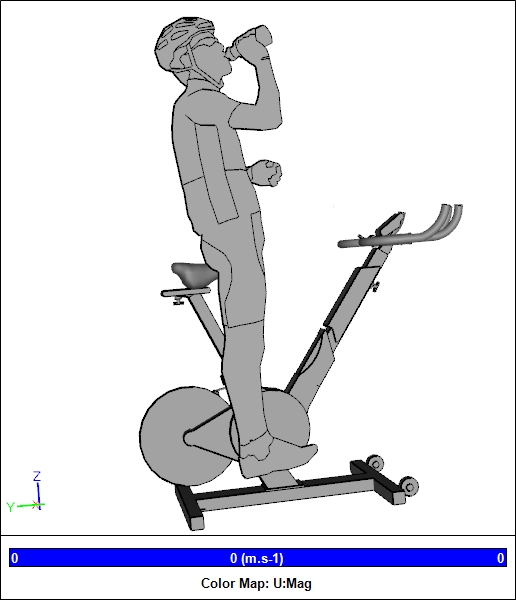
Aerodynamic Performance of a Stationary Bicycle
Aerodynamics plays a crucial role in the performance characteristics of outdoor cycling. However, no-one to my knowledge has used Computational Fluid Dynamics (CFD) to analyze the aerodynamic performance of a stationary bicycle - at least until now!
 SketchUp Model of a Stationary Bicycle and Cyclist
SketchUp Model of a Stationary Bicycle and Cyclist
Background
The obvious condition to investigate for a stationary bicycle is a headwind. However, equally important to consider are crosswinds (yaw), which can play havoc with outdoor group cycling. To account for all possible wind conditions I used CFD to simulate a full 360-degree sweep in 10 degree increments, equivalent to different orientations of the bicycle.
The original model for the analysis came from SketchUp 3D Warehouse and is a worst case scenario, in terms of drag, with the cyclist drinking from a water bottle in an upright position.
Results
 Stationary Bicycle Drag
Stationary Bicycle Drag
Remarkably the drag of the stationary bicycle was the same value for all angles of orientation as shown above. Even more remarkable was that the drag was zero - an outdoor cyclist's dream.
 Stationary Bicycle Streamlines
Stationary Bicycle Streamlines
Unfortunately the streamlines around the stationary bicycle for the headwind condition (orientation = 0 degrees) do not reveal any details about the overall air flow.
Conclusions
This CFD study shows that a stationary bicycle does not experience any drag force. Further this phenomenon is independent of the orientation (angle) of the bicycle.
Further Work
Given the remarkable findings of this analysis it is always a good idea to see another independent study for validation, so I eagerly await wind tunnel test confirmation of these results.
To further explore the effect (or lack of it) of drag on stationary bicycles I intend to use CFD to simulate a full aerodynamic setup that includes a cyclist wearing a skinsuit and an aerodynamic helmet.
Recent blog posts
- CFD Simulates Distant Past
- Background on the Caedium v6.0 Release
- Long-Necked Dinosaurs Succumb To CFD
- CFD Provides Insight Into Mystery Fossils
- Wind Turbine Design According to Insects
- Runners Discover Drafting
- Wind Tunnel and CFD Reveal Best Cycling Tuck
- Active Aerodynamics on the Lamborghini Huracán Performante
- Fluidic Logic
- Stonehenge Vortex Revealed as April Fools' Day Distortion Field

Comments
Okey, no drag, but what about lift?
Thank you for this excellent real-life example of CFD. This is a typical example of how CFD improves performance in competitive sports.
If time allows, a recalculation of the simulation with both drag and lift for the various orientations may be in order, as the bicyclist' position could cause lift inducing phenomena.
Kind Regards,
Per Hassel S.
Next Installment
"bicyclist' position could cause lift inducing phenomena" good point. Look for another installment on April 1, next year.
Happy April Fools' Day
Full confession this was an April Fools' Day prank.